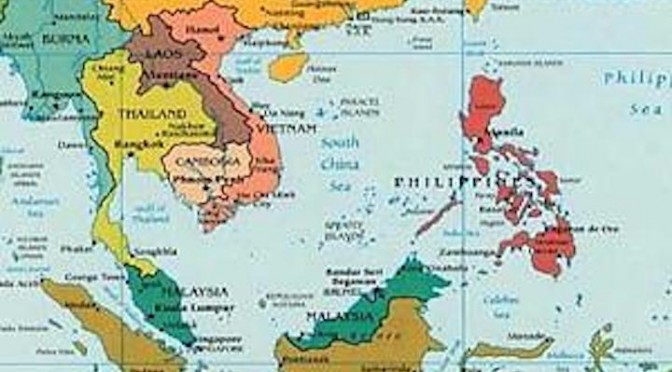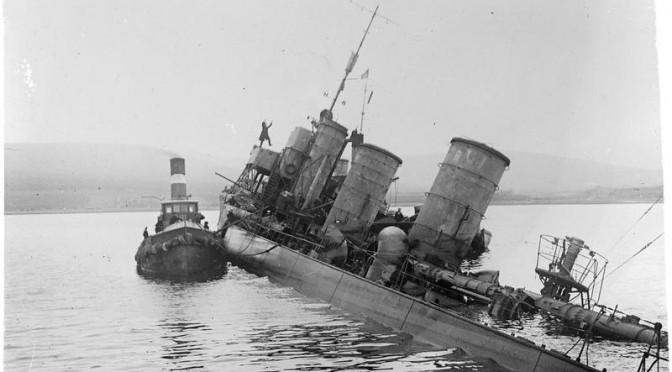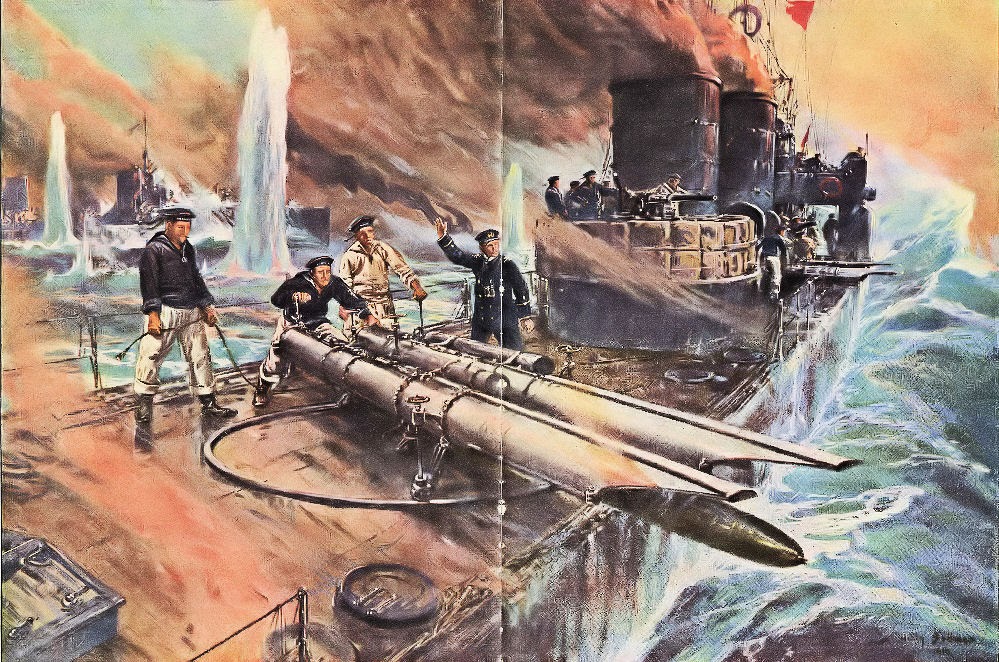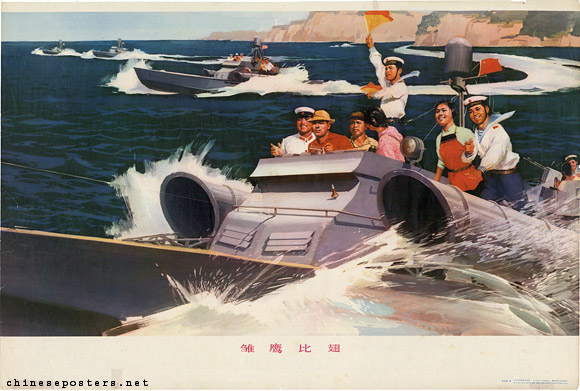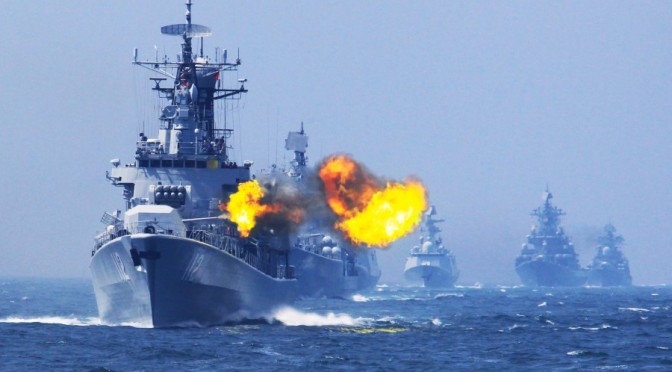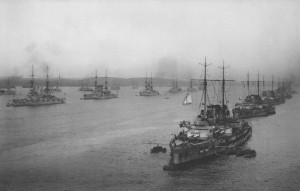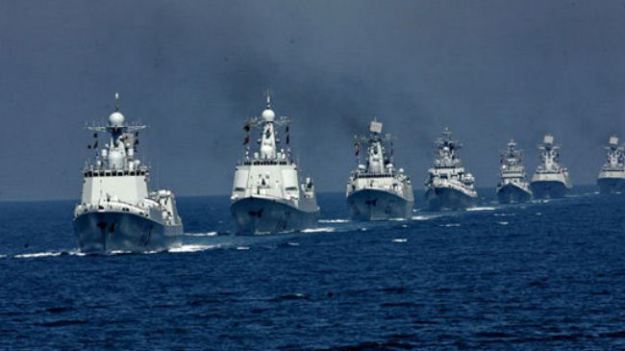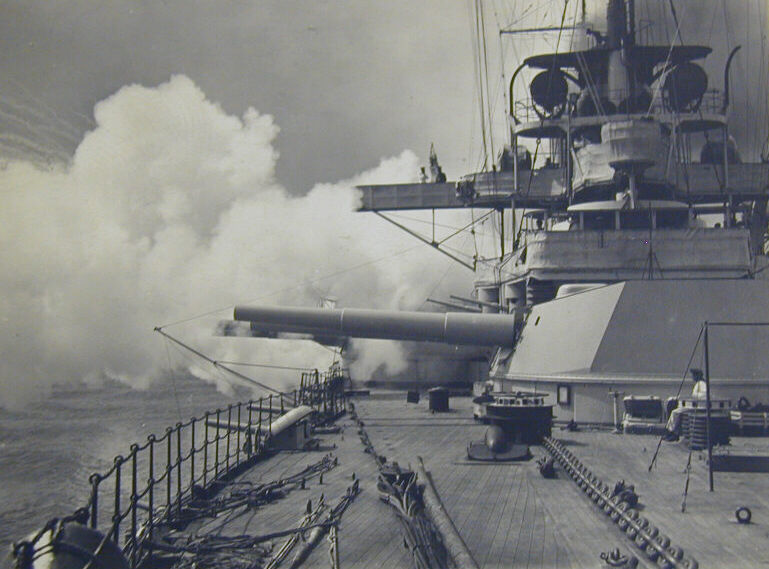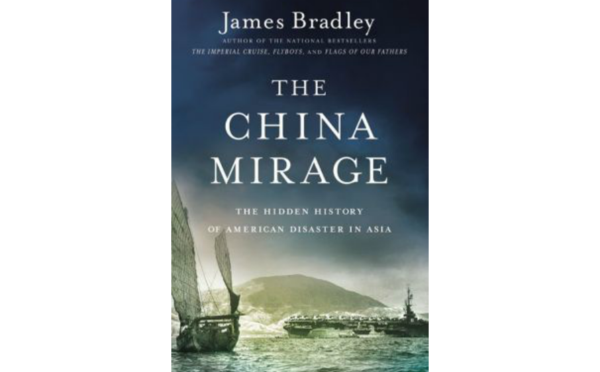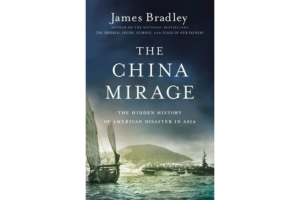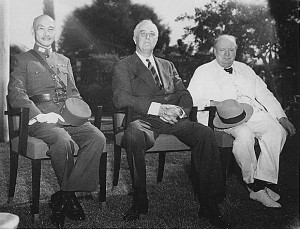The following post by Dr. James Kraska was originally published at the Asia Maritime Transparency Initiative. It is re-posted here with the author’s permission.
While China conducts innocent passage around real U.S. islands of Alaska, the U.S. is apparently unable to do so around China’s fake islands in the South China Sea. The transit by Chinese warships in innocent passage through the territorial sea of Attu Island in the Aleutian chain has added an additional wrinkle to U.S. policy in the South China Sea.
On May 12, the Wall Street Journal reported that Secretary of Defense Ash Carter had asked his staff to “look at options” for exercising the rights and freedom of navigation and overflight in the EEZ, to include flying maritime patrol aircraft over China’s new artificial islands in the region, and sending U.S. warships to within 12 nautical miles of them. Later that month, a P-8
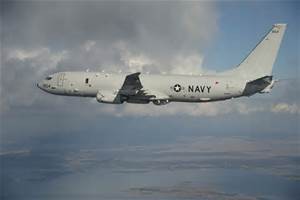
surveillance aircraft with a CNN crew on board, was repeatedly warned to “go away quickly” from Fiery Cross Reef, even as it flew beyond 12 nm from the feature. Fiery Cross Reef is a Chinese-occupied outcropping that has been fortified by a massive 2.7 million square meter land reclamation into an artificial island with a 3,110-meter airstrip and harbor works capable of servicing large warships.
Warships and commercial vessels of all nations are entitled to conduct transit in innocent passage in the territorial sea of a rock or island of a coastal state, although aircraft do not enjoy such a right. Ironically, the website POLITICO reported on July 31 that the White House blocked plans by Admiral Harry Harris, Commander, U.S. Pacific Command, to send warships within 12 nm of China’s artificial islands – features that may not even qualify for a territorial sea. By blocking such transits, military officials apparently suggest that the White House tacitly accepts China’s unlawful claim to control shipping around its occupied features in the South China Sea. Senator John McCain complained that the United States was making a “dangerous mistake” by granting de facto recognition of China’s man-made “sovereignty” claims.
It is unclear whether features like Fiery Cross Reef are rocks or merely low-tide elevations that are submerged at high tide, and after China has so radically transformed them, it may now be impossible to determine their
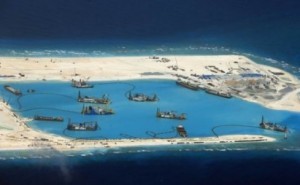
natural state. Under the terms of the law of the sea, states with ownership over naturally formed rocks are entitled to claim a 12 nm territorial sea. On the other hand, low-tide elevations in the mid-ocean do not qualify for any maritime zone whatsoever. Likewise, artificial islands and installations also generate no maritime zones of sovereignty or sovereign rights in international law, although the owner of features may maintain a 500-meter vessel traffic management zone to ensure navigational safety.
Regardless of the natural geography of China’s occupied features in the South China Sea, China does not have clear legal title to them. Every feature occupied by China is challenged by another claimant state, often with clearer line of title from Spanish, British or French colonial rule. The nation, not the land, is sovereign, which is why there is no territorial sea around Antarctica – it is not under the sovereignty of any state, despite being a continent. As the United States has not recognized Chinese title to the features, it is not obligated to observe requirements of a theoretical territorial sea. Since the territorial sea is function of state sovereignty of each rock or island, and not a function of simple geography, if the United States does not recognize any state having title to the feature, then it is not obligated to observe a theoretical territorial sea and may treat the feature as terra nullius. Not only do U.S. warships have a right to transit within 12 nm of Chinese features, they are free to do so as an exercise of highs seas freedom under article 87 of the Law of the Sea Convention, rather than the more limited regime of innocent passage. Furthermore, whereas innocent passage does not permit overflight, high seas freedoms do, and U.S. naval aircraft lawfully may overfly such features.
In response, it might be suggested that while the United States may not recognize Chinese ownership of the rocks, it must realize that some country, perhaps one of the coastal states actually located in the vicinity of the feature, has lawful title, and therefore the U.S. Navy is bound to observe a putative territorial sea.
It is possible, however, that there is no state that has lawful title, and indeed the swirling debate and paucity of evidence rendered by claimants suggests this may be the case. Before World War II, few if any of the features were effectively governed by anyone, except Japan, which illegally occupied them during war. Tokyo gave up its claim after World War II. Similarly, actions taken by states after 1945 to seize maritime features using armed aggression are prima facie unlawful under article 2(4) of the Charter of the United Nations. Furthermore, actions taken by a state to fortify its claim after there is a dispute are similarly void of legal effect. In any event, the strongest claims appear to flow from the doctrine of uti possidetis, which stipulates that lawful possession is assumed by colonies after they become independent states. Prior to 1945, conquest was a lawful means of acquiring title to territory, so the European colonial powers certainly enjoyed legal title to the features they controlled. The Philippines, Malaysia and Brunei, Indonesia, and Vietnam derive their title to features from Spain, Great Britain, the Netherlands, and France.
More importantly, even assuming that one or another state may have lawful title to a feature, other states are not obligated to confer upon that nation the right to unilaterally adopt and enforce measures that interfere with navigation, until lawful title is resolved. Indeed, observing any nation’s rules pertaining to features under dispute legitimizes that country’s claim and takes sides. This point is particularly critical for commercial overflight since states already manage international air traffic through the International Civil Aviation Organization and the worldwide air traffic control regions. Finally, there is a policy reason that supports this approach. Given the proliferation of claims over the hundreds of rocks, reefs, skerries and cays in the South China Sea, if the international community recognizes the maximum theoretical rights generated by each of them, the oceans and airspace will come to look like Swiss cheese and be practically closed off to free navigation and overflight.
Distinguished American historian Samuel Flagg Bemis called the doctrine of freedom of the seas the “ancient birthright” of the American Republic.[1] This birthright faces its gravest risk since unrestricted submarine warfare. Woodrow Wilson brought the United States into World War I to vindicate a Fourteen Point program for peace. Point number 2 was for “freedom of navigation … in peace and in war.” Similarly, Franklin D. Roosevelt and Winston Churchill signed the Atlantic Charter in 1941 that set forth principles for a new world order – a united nations. Principle Seven committed them to freedom of the seas. Maritime freedoms and the law of the sea are at an inflection point. The United States and the international community must take action now to operate with regularity on, under, and above the surface of the South China Sea, persistently and routinely in the vicinity of China’s artificial islands. Only a normalized presence today will ensure predictability and stability tomorrow.
[1] Samuel Flagg Bemis, A Diplomatic History of the United States, 4th ed. (New York: Henry Holt, 1955): 875.
Dr. James Kraska is Professor in the Stockton Center for the Study of International Law, where he previously served as Howard S. Levie Chair in International Law from 2008-13. During 2013-14, he was a Mary Derrickson McCurdy Visiting Scholar at Duke University, where he taught international law of the sea. He is also a Senior Fellow at the Center for Oceans Law and Policy at the University of Virginia School of Law, Guest Investigator at the Marine Policy Center, Woods Hole Oceanographic Institution, Senior Fellow at the Foreign Policy Research Institute, and a Senior Associate at the Naval War College’s Center on Irregular Warfare and Armed Groups.

